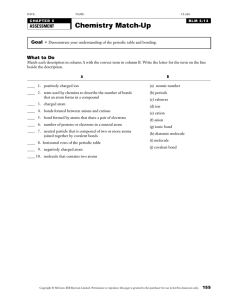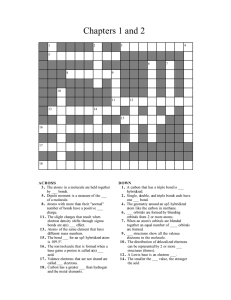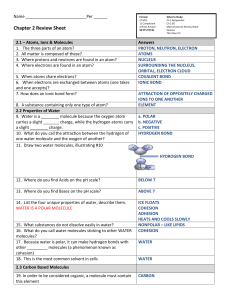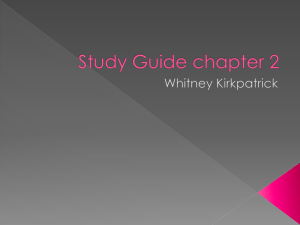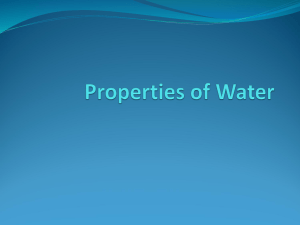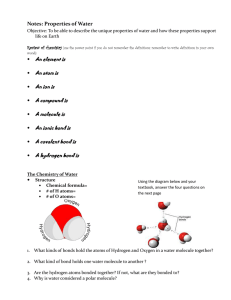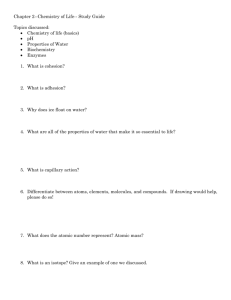The Nature of Matter
advertisement
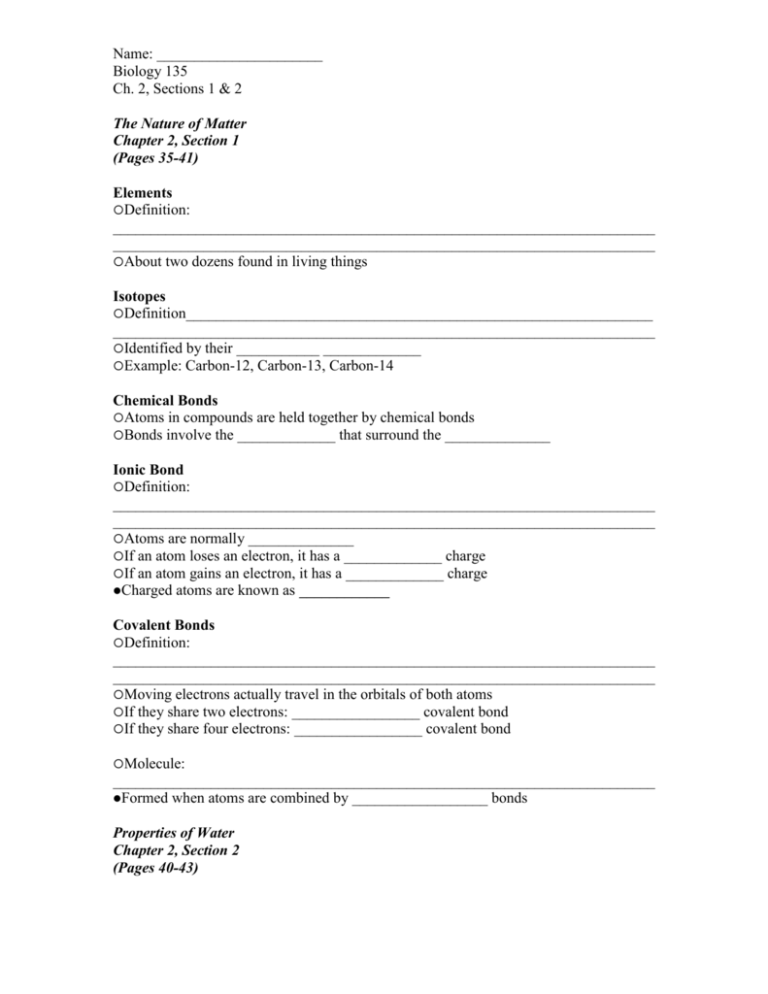
Name: ______________________ Biology 135 Ch. 2, Sections 1 & 2 The Nature of Matter Chapter 2, Section 1 (Pages 35-41) Elements Definition: ________________________________________________________________________ ________________________________________________________________________ About two dozens found in living things Isotopes Definition______________________________________________________________ ________________________________________________________________________ Identified by their ___________ _____________ Example: Carbon-12, Carbon-13, Carbon-14 Chemical Bonds Atoms in compounds are held together by chemical bonds Bonds involve the _____________ that surround the ______________ Ionic Bond Definition: ________________________________________________________________________ ________________________________________________________________________ Atoms are normally ______________ If an atom loses an electron, it has a _____________ charge If an atom gains an electron, it has a _____________ charge Charged atoms are known as ____________ Covalent Bonds Definition: ________________________________________________________________________ ________________________________________________________________________ Moving electrons actually travel in the orbitals of both atoms If they share two electrons: _________________ covalent bond If they share four electrons: _________________ covalent bond Molecule: ________________________________________________________________________ Formed when atoms are combined by __________________ bonds Properties of Water Chapter 2, Section 2 (Pages 40-43) Name: ______________________ Biology 135 Ch. 2, Sections 1 & 2 Chemical Compounds Definition: ________________________________________________________________________ ________________________________________________________________________ Shown by a chemical _______________________ Ex: H2O, NaCl The properties of a compound are usually very different than the individual elements that make them up & Oxygen by themselves can be very explosive – together they give us ___________ Sodium is a silver-colored _____________ that is soft enough to cut with a knife, explodes when mixed with cold water; Chlorine is a poisonous greenish __________ used to kill in WWI – together they give us table ____________ Hydrogen The Water Molecule Polarity The ______ protons of Oxygen has a stronger attraction for electrons than the Hydrogen atoms with ______ proton Gives the water molecule a __________ shape Oxygen end has a slight _____________ charge Hydrogen end has a slight ____________ charge Because of their partial positive and negative charges, polar molecules can ______________ each other Attraction between the hydrogen atom of one water molecule and the oxygen atom of another water molecule creates a _____________ bond Cohesion _____________________________________________________________________ Because of hydrogen bonding, water is extremely ______________ of water form beads on a smooth surface Why insects and spiders can walk on a pond’s surface Why drops Adhesion ______________________________________________________________________ Ex: the surface of water in a graduated cylinder dips slightly in the center because the adhesion between water molecules and glass molecules is stronger than the cohesion between water molecules
